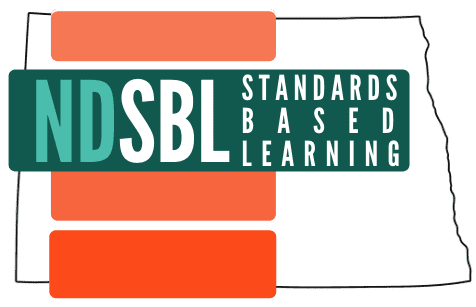(C) Collaboration
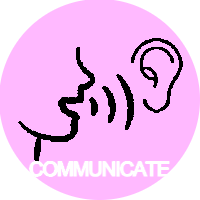 Strand Cluster for Strand Cluster for
(C) Communication
Cluster (C) Collaboration 
Learners will engage in a range of discussions with various partners on relevant topics, texts, and issues.
-
Standard C.5: Preparation for Discussions
-
Standard C.6: Group Discussions and Debate
-
Standard C.7: Group Collaboration
|
|
(C) Comprehension
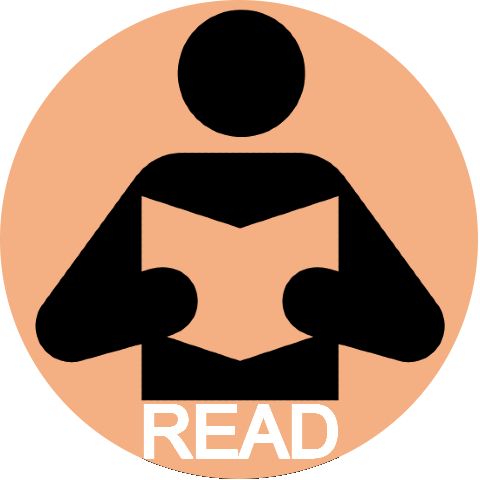 Strand Cluster for Strand Cluster for
(R) Reading
Cluster (C) Comprehension 
Learners will read to understand a variety of complex literary and informational texts.
-
Standard R.1: Listening Comprehension
-
Standard R.2: Text Comprehension/Inferences
-
Standard R.3a: Summarizing Nonfiction Text
-
Standard R.3b: Summarize Literary Text
-
Standard R.4: Main Idea/Claim/Theme
-
Standard R.5: Use Text to Determine Word Meaning
|
|
(F) Fluency
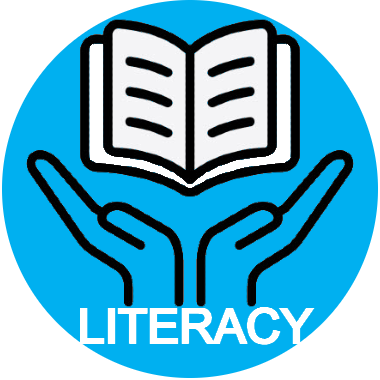 Strand Cluster for Strand Cluster for
(F) Foundations of Literacy
Cluster (F) Fluency 
Learners will read with sufficient accuracy, rate, and expression to support comprehension.
-
Standard F.12: Oral Reading Fluency
|
|
(FW) Foundations of Writing
 Strand Cluster for Strand Cluster for
(F) Foundations of Literacy
Cluster (FW) Foundations of Writing 
Learners will write complete sentences and paragraphs.
-
Standard F.13: Letter Formation
-
Standard F.14: Sentence and Paragraph Writing
|
|
(L) Conventions of Standard English
 Strand Cluster Anchor Statement Strand Cluster Anchor Statement
Language 
Conventions of Standard English
Demonstrate command of the conventions of standard English grammar and usage when writing or speaking.
Demonstrate command of the conventions of standard English capitalization, punctuation, and spelling when writing.
The anchor statements define what students should understand and be able to do by the end of each grade. They correspond to the College and Career Readiness (CCR) anchor statements. The CCR and grade-specific standards are necessary complements—the former
providing broad standards, the latter providing additional specificity—that together define the skills and understandings that all students must demonstrate. |
|
(L) Knowledge of Language
 Strand Cluster Anchor Statement Strand Cluster Anchor Statement
Language 
Knowledge of Language
Apply knowledge of language to understand how language functions in different contexts, to make effective choices for meaning or style, and to comprehend more fully when reading or listening.
The anchor statements define what students should understand and be able to do by the end of each grade. They correspond to the College and Career Readiness (CCR) anchor statements. The CCR and grade-specific standards are necessary complements—the former
providing broad standards, the latter providing additional specificity—that together define the skills and understandings that all students must demonstrate. |
|
(L) Vocabulary Acquisition and Use
 Strand Cluster Anchor Statement Strand Cluster Anchor Statement
Language 
Vocabulary Acquisition and Use
Determine or clarify the meaning of unknown and multiple-meaning words and phrases by using context clues, analyzing meaningful word parts, and consulting general and specialized reference materials, as appropriate.
Demonstrate understanding of word relationships and nuances in word meanings.
Acquire and use accurately a range of general academic and domain-specific words and phrases sufficient for reading, writing, speaking, and listening at the college and career readiness level; demonstrate independence in gathering vocabulary knowledge
when encountering an unknown term important to comprehension or expression.
The anchor statements define what students should understand and be able to do by the end of each grade. They correspond to the College and Career Readiness (CCR) anchor statements. The CCR and grade-specific standards are necessary complements—the former
providing broad standards, the latter providing additional specificity—that together define the skills and understandings that all students must demonstrate. |
|
(LU) Language Usage
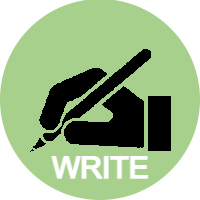 Strand Cluster for Strand Cluster for
(Wr) Writing
Cluster (LU) Language Usage 
Learners will integrate appropriate language and style to ensure effective readability in writing.
-
Standard L.1: Language Mechanics (K-5)/Language Mechanics and Grammar (6-12)
-
Standard L.2: Grammar (K-5)
|
|
(PC) Presentational Communication
 Strand Cluster for Strand Cluster for
(C) Communication
Cluster (PC) Presentational Communication 
Learners will organize and express information in a format appropriate to the audience and purpose.
-
Standard C.1: Presentations
-
Standard C.2: Giving Oral Presentations
-
Standard C.3: Use of Receptive Vocabulary
-
Standard C.4: Academic Vocabulary Acquired Through Listening
|
|
(PC) Print Concepts
 Strand Cluster for Strand Cluster for
(F) Foundation of Literacy
Cluster (PC) Print Concepts 
Learners will demonstrate knowledge of books, print, and written language and how they function..
-
Standard F.1: Parts of Books
-
Standard F.2: Reading Directionality
-
Standard F.3: Print Concepts
|
|
(PPA) Phonological and Phonemic Awareness
 Strand Cluster for Strand Cluster for
(F) Foundations of Literacy
Cluster (PPA) Phonological and Phonemic Awarenesss 
Learners will read with sufficient accuracy, rate, and expression to support comprehension.
-
Standard F.4: Rhyming Words
-
Standard F.5: Segmenting Words
-
Standard F.6: Blending Syllables and Phonemes
-
Standard F.7: Isolating and Manipulating Phonemes
|
|
(PWS) Phonics and Word Study
 Strand Cluster for Strand Cluster for
(F) Foundations of Literacy
Cluster (PWS) Phonics and Word Study 
Learners will decode, encode, and connect meaning to word parts and words.
-
Standard F.8: Decoding Words
-
Standard F.9: Encoding Words (Spelling)
-
Standard F.10: Determining Meanings of Words (Vocabulary)
-
Standard F.11: Academic Vocabulary
|
|
(RF) Fluency
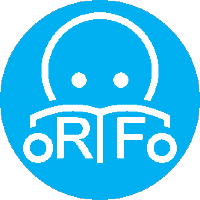 Strand Cluster Anchor Statement Strand Cluster Anchor Statement
Reading Foundations 
Fluency
Students must be able to read and comprehend text on-level accurately, at the appropriate rate, and with the correct expression. This is best accomplished by repeated readings of text passages of increasing complexity while reporting the reading rate
and accuracy.
The anchor statements define what students should understand and be able to do by the end of each grade. They correspond to the College and Career Readiness (CCR) anchor statements. The CCR and grade-specific standards are necessary complements—the former
providing broad standards, the latter providing additional specificity—that together define the skills and understandings that all students must demonstrate. |
|
(RF) Phonics and Word Recognition
 Strand Cluster Anchor Statement Strand Cluster Anchor Statement
Reading Foundations 
Phonics and Word Recognition
Students must match a unit of sound (a phoneme) to the letter or letters that make the sound. Separating the written word into its individual sounds and blending the individual sounds of letters to make words are the foundation of reading.
Students must be able to recognize and read a collection of high-frequency words — many of which cannot be decoded by sight — and be able to do so with increasing automaticity.
The anchor statements define what students should understand and be able to do by the end of each grade. They correspond to the College and Career Readiness (CCR) anchor statements. The CCR and grade-specific standards are necessary complements—the former
providing broad standards, the latter providing additional specificity—that together define the skills and understandings that all students must demonstrate. |
|
(RF) Phonological Awareness
 Strand Cluster Anchor Statement Strand Cluster Anchor Statement
Reading Foundations 
Phonological Awareness
This foundational skill is about recognizing the sounds of language. It begins with word awareness and the ability to recognize, for example, the number of words that make up a spoken sentence. Secondary mastery of these skills includes recognizing
rhyme and syllables. At the most detailed level, the phoneme level, students can discern the sounds that make up a word. They can segment the sounds within a word, blend sounds together to make a word, and substitute sounds to make new words.
The anchor statements define what students should understand and be able to do by the end of each grade. They correspond to the College and Career Readiness (CCR) anchor statements. The CCR and grade-specific standards are necessary complements—the former
providing broad standards, the latter providing additional specificity—that together define the skills and understandings that all students must demonstrate. |
|
(RF) Print Concepts
 Strand Cluster Anchor Statement Strand Cluster Anchor Statement
Reading Foundations 
Print Concepts
When teachers introduce students to written language, students must understand the basic organization and concepts of print: Words have meaning, left-to-right and top-to-bottom hierarchy; letters create words and words create sentences; words are separated
by spaces, and punctuation controls the pace and expression of print. Children frequently come to understand these concepts through owning their first books.
The anchor statements define what students should understand and be able to do by the end of each grade. They correspond to the College and Career Readiness (CCR) anchor statements. The CCR and grade-specific standards are necessary complements—the former
providing broad standards, the latter providing additional specificity—that together define the skills and understandings that all students must demonstrate. |
|
(RI) Craft and Structure
 Strand Cluster Anchor Statement Strand Cluster Anchor Statement
Reading Information 
Craft and Structure
Interpret words and phrases as they are used in a text, including determining technical, connotative, and figurative meanings, and analyze how specific word choices shape meaning or tone.
Analyze the structure of texts, including how specific sentences, paragraphs, and larger portions of the text (e.g., a section, chapter, scene, or stanza) relate to each other and the whole.
Assess how point of view or purpose shapes the content and style of a text.
The anchor statements define what students should understand and be able to do by the end of each grade. They correspond to the College and Career Readiness (CCR) anchor statements. The CCR and grade-specific standards are necessary complements—the former
providing broad standards, the latter providing additional specificity—that together define the skills and understandings that all students must demonstrate. |
|
(RI) Integration of Knowledge and Ideas
 Strand Cluster Anchor Statement Strand Cluster Anchor Statement
Reading Information 
Integration of Knowledge and Ideas
Integrate and evaluate content presented in diverse media and formats, including visually and quantitatively, as well as in words.
Delineate and evaluate the argument and specific claims in a text, including the validity of the reasoning as well as the relevance and sufficiency of the evidence.
Analyze how two or more texts address similar themes or topics in order to build knowledge or to compare the approaches the authors take.
The anchor statements define what students should understand and be able to do by the end of each grade. They correspond to the College and Career Readiness (CCR) anchor statements. The CCR and grade-specific standards are necessary complements—the former
providing broad standards, the latter providing additional specificity—that together define the skills and understandings that all students must demonstrate. |
|
(RI) Key Ideas and Details
 Strand Cluster Anchor Statement Strand Cluster Anchor Statement
Reading Information 
Key Ideas and Details
Read closely to determine what the text says explicitly and to make logical inferences from it.
Summarize the key supporting details and ideas.
Determine central ideas or themes of a text and analyze their development.
Analyze how and why individuals, events, and ideas develop and interact over the course of a text.
Cite specific textual evidence when writing or speaking to support conclusions drawn from the text.
The anchor statements define what students should understand and be able to do by the end of each grade. They correspond to the College and Career Readiness (CCR) anchor statements. The CCR and grade-specific standards are necessary complements—the former
providing broad standards, the latter providing additional specificity—that together define the skills and understandings that all students must demonstrate. |
|
(RI) Range of Reading and Level of Text Complexity
 Strand Cluster Anchor Statement Strand Cluster Anchor Statement
Reading Information 
Range of Reading and Level of Text Complexity
Read and comprehend complex literary and informational texts independently and proficiently.
The anchor statements define what students should understand and be able to do by the end of each grade. They correspond to the College and Career Readiness (CCR) anchor statements. The CCR and grade-specific standards are necessary complements—the former
providing broad standards, the latter providing additional specificity—that together define the skills and understandings that all students must demonstrate. |
|
(RL) Craft and Structure
 Strand Cluster Anchor Statement Strand Cluster Anchor Statement
Reading Literature 
Craft and Structure
Interpret words and phrases as they are used in a text, including determining technical, connotative, and figurative meanings, and analyze how specific word choices shape meaning or tone.
Analyze the structure of texts, including how specific sentences, paragraphs, and larger portions of the text (e.g., a section, chapter, scene, or stanza) relate to each other and the whole.
Assess how point of view or purpose shapes the content and style of a text.
The anchor statements define what students should understand and be able to do by the end of each grade. They correspond to the College and Career Readiness (CCR) anchor statements. The CCR and grade-specific standards are necessary complements—the former
providing broad standards, the latter providing additional specificity—that together define the skills and understandings that all students must demonstrate. |
|
(RL) Integration of Knowledge and Ideas
 Strand Cluster Anchor Statement Strand Cluster Anchor Statement
Reading Literature 
Integration of Knowledge and Ideas
Integrate and evaluate content presented in diverse media and formats, including visually and quantitatively, as well as in words.
Delineate and evaluate the argument and specific claims in a text, including the validity of the reasoning as well as the relevance and sufficiency of the evidence.
Analyze how two or more texts address similar themes or topics in order to build knowledge or to compare the approaches the authors take.
The anchor statements define what students should understand and be able to do by the end of each grade. They correspond to the College and Career Readiness (CCR) anchor statements. The CCR and grade-specific standards are necessary complements—the former
providing broad standards, the latter providing additional specificity—that together define the skills and understandings that all students must demonstrate. |
|
(RL) Key Ideas and Details
 Strand Cluster Anchor Statement Strand Cluster Anchor Statement
Reading Literature 
Key Ideas and Details
-
Read closely to determine what the text says explicitly and to make logical inferences from it.
-
Summarize the key supporting details and ideas.
-
Determine central ideas or themes of a text and analyze their development.
-
Analyze how and why individuals, events, and ideas develop and interact over the course of a text.
-
Cite specific textual evidence when writing or speaking to support conclusions drawn from the text.
The anchor statements define what students should understand and be able to do by the end of each grade. They correspond to the College and Career Readiness (CCR) anchor statements. The CCR and grade-specific standards are necessary complements—the former
providing broad standards, the latter providing additional specificity—that together define the skills and understandings that all students must demonstrate. |
|
(RL) Range of Reading and Level of Text Complexity
 Strand Cluster Anchor Statement Strand Cluster Anchor Statement
Reading Literature 
Range of Reading and Level of Text Complexity
Read and comprehend complex literary and informational texts independently and proficiently.
The anchor statements define what students should understand and be able to do by the end of each grade. They correspond to the College and Career Readiness (CCR) anchor statements. The CCR and grade-specific standards are necessary complements—the former
providing broad standards, the latter providing additional specificity—that together define the skills and understandings that all students must demonstrate. |
|
(S1) Select a Research Topic and Develop Research Question(s)
 Strand Clusters for Strand Clusters for
(IA) Inquiry and Research
Learners will pose and revise complex questions, identify and connect pertinent information, plan and prepare an inquiry process, and arrive at a plausible conclusion or solution.
-
Standard IR.1: (S1) Select a Research Topic and Develop Research Question(s) begins in 3rd grade
-
Standard IR.2: (S2) Locate and Select Information begins in 2nd grade
-
Standard IR.3: (S3) Organize Research Results begins in 2nd grade
-
Standard IR.4: (S4) Determining Credibility and Evaluating Sources begins in 3rd grade
-
Standard IR.5: (S5) Citing Sources begins in 4th grade
|
|
(S2) Locate and Select Information
 Strand Clusters for Strand Clusters for
(IA) Inquiry and Research
Learners will pose and revise complex questions, identify and connect pertinent information, plan and prepare an inquiry process, and arrive at a plausible conclusion or solution.
-
Standard IR.1: (S1) Select a Research Topic and Develop Research Question(s) begins in 3rd grade
-
Standard IR.2: (S2) Locate and Select Information begins in 2nd grade
-
Standard IR.3: (S3) Organize Research Results begins in 2nd grade
-
Standard IR.4: (S4) Determining Credibility and Evaluating Sources begins in 3rd grade
-
Standard IR.5: (S5) Citing Sources begins in 4th grade
|
|
(S3) Organize Research Results
 Strand Clusters for Strand Clusters for
(IA) Inquiry and Research
Learners will pose and revise complex questions, identify and connect pertinent information, plan and prepare an inquiry process, and arrive at a plausible conclusion or solution.
-
Standard IR.1: (S1) Select a Research Topic and Develop Research Question(s) begins in 3rd grade
-
Standard IR.2: (S2) Locate and Select Information begins in 2nd grade
-
Standard IR.3: (S3) Organize Research Results begins in 2nd grade
-
Standard IR.4: (S4) Determining Credibility and Evaluating Sources begins in 3rd grade
-
Standard IR.5: (S5) Citing Sources begins in 4th grade
|
|
(S4) Determining Credibility and Evaluating Sources
 Strand Clusters for Strand Clusters for
(IA) Inquiry and Research
Learners will pose and revise complex questions, identify and connect pertinent information, plan and prepare an inquiry process, and arrive at a plausible conclusion or solution.
-
Standard IR.1: (S1) Select a Research Topic and Develop Research Question(s) begins in 3rd grade
-
Standard IR.2: (S2) Locate and Select Information begins in 2nd grade
-
Standard IR.3: (S3) Organize Research Results begins in 2nd grade
-
Standard IR.4: (S4) Determining Credibility and Evaluating Sources begins in 3rd grade
-
Standard IR.5: (S5) Citing Sources begins in 4th grade
|
|
(S5) Citing Sources
 Strand Clusters for Strand Clusters for
(IA) Inquiry and Research
Learners will pose and revise complex questions, identify and connect pertinent information, plan and prepare an inquiry process, and arrive at a plausible conclusion or solution.
-
Standard IR.1: (S1) Select a Research Topic and Develop Research Question(s) begins in 3rd grade
-
Standard IR.2: (S2) Locate and Select Information begins in 2nd grade
-
Standard IR.3: (S3) Organize Research Results begins in 2nd grade
-
Standard IR.4: (S4) Determining Credibility and Evaluating Sources begins in 3rd grade
-
Standard IR.5: (S5) Citing Sources begins in 4th grade
|
|
(SL) Comprehension and Collaboration
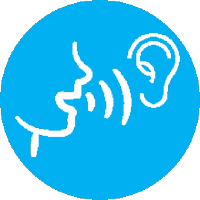 Strand Cluster Anchor Statement Strand Cluster Anchor Statement
Speaking and Listening 
Comprehension and Collaboration
Prepare for and participate effectively in a range of conversations and collaborations with diverse partners, building on others’ ideas and expressing their own clearly and persuasively.
Integrate and evaluate information presented in diverse media and formats, including visually, quantitatively, and orally.
Evaluate a speaker’s point of view, reasoning, and use of evidence and rhetoric.
The anchor statements define what students should understand and be able to do by the end of each grade. They correspond to the College and Career Readiness (CCR) anchor statements. The CCR and grade-specific standards are necessary complements—the former
providing broad standards, the latter providing additional specificity—that together define the skills and understandings that all students must demonstrate. |
|
(SL) Presentation of Knowledge and Ideas
 Strand Cluster Anchor Statement Strand Cluster Anchor Statement
Speaking and Listening 
Presentation of Knowledge and Ideas
Present information, findings, and supporting evidence such that listeners can follow the line of reasoning and the organization, development, and style are appropriate to task, purpose, and audience.
Make strategic use of digital media and visual displays of data to express information and enhance understanding of presentations.
Adapt speech to a variety of contexts and communicative tasks, demonstrating command of formal English when indicated or appropriate.
The anchor statements define what students should understand and be able to do by the end of each grade. They correspond to the College and Career Readiness (CCR) anchor statements. The CCR and grade-specific standards are necessary complements—the former
providing broad standards, the latter providing additional specificity—that together define the skills and understandings that all students must demonstrate. |
|
(TA) Text Analysis
 Strand Cluster for Strand Cluster for
(R) Reading
Cluster (TA) Text Analysis 
Learners will analyze, interpret, and evaluate complex literary and informational texts that include a wide variety of genres and formats.
-
Standard R.6: Text Features and Structure
-
Standard R.7: Literary Devices
-
Standard R.8: Analysis and Comparison of Literary Texts
-
Standard R.9: Synthesis and Analysis of Informational Text
|
|
(TTS) Text Types and Structure
 Strand Cluster for Strand Cluster for
(Wr) Writing
Cluster (TTS) Text Types and Structure 
Learners will engage in the writing process and produce a variety of texts determined to address different audiences and purposes.
-
Standard Wr.1: Development and Purpose of Writing
-
Standard Wr.2: Organizational Structure
-
Standard Wr.3: Informative/Explanatory/Technical Writing Technique
-
Standard Wr.4: Opinion/Argumentative/Persuasive Techniques
-
Standard Wr.5: Narrative/Creative Writing Techniques
|
|
(W) Production and Distribution of Writing
 Strand Cluster Anchor Statement Strand Cluster Anchor Statement
Writing 
Production and Distribution of Writing
Produce clear and coherent writing in which the development, organization, and style are appropriate for a range of tasks, purposes, and audiences.
Develop and strengthen writing as needed by planning, revising, editing, rewriting, or trying a new approach.
Use technology, including the Internet, to produce and publish writing and to interact and collaborate with others.
The anchor statements define what students should understand and be able to do by the end of each grade. They correspond to the College and Career Readiness (CCR) anchor statements. The CCR and grade-specific standards are necessary complements—the former
providing broad standards, the latter providing additional specificity—that together define the skills and understandings that all students must demonstrate. |
|
(W) Research to Build and Present Knowledge
 Strand Cluster Anchor Statement Strand Cluster Anchor Statement
Writing 
Research to Build and Present Knowledge
Conduct short as well as more sustained research projects based on focused questions, demonstrating understanding of the subject under investigation.
Gather relevant information from multiple print and digital sources, assess the credibility and accuracy of each source, and integrate the information while avoiding plagiarism.
Draw evidence from literary or informational texts to support analysis, reflection, and research.
The anchor statements define what students should understand and be able to do by the end of each grade. They correspond to the College and Career Readiness (CCR) anchor statements. The CCR and grade-specific standards are necessary complements—the former
providing broad standards, the latter providing additional specificity—that together define the skills and understandings that all students must demonstrate. |
|
(W) Text Types and Purposes
 Strand Cluster Anchor Statement Strand Cluster Anchor Statement
Writing 
Text Types and Purposes
Write arguments to support claims in an analysis of substantive topics or texts, using valid reasoning and relevant and sufficient evidence.
Write informative/explanatory texts to examine and convey complex ideas and information clearly and accurately through the effective selection, organization, and analysis of content.
Write narratives to develop real or imagined experiences or events using effective technique, well-chosen details, and well-structured event sequences.
The anchor statements define what students should understand and be able to do by the end of each grade. They correspond to the College and Career Readiness (CCR) anchor statements. The CCR and grade-specific standards are necessary complements—the former
providing broad standards, the latter providing additional specificity—that together define the skills and understandings that all students must demonstrate. |
|
(WPC) Writing Process and Craft
 Strand Cluster for Strand Cluster for
(Wr) Writing
Cluster (WPC) Writing Process and Craft 
Learners will develop, strengthen, and produce writing by planning, revising, editing, and rewriting.
-
Standard Wr.6: Writing Process
-
Standard Wr.7: Word Choice/Voice
|
|
Prioritized Standards Identifiers
Prioritized Standards are those that have been identified as most essential to a particular grade level, content area, or course.
Although it is still important to teach standards that are not deemed prioritized, teachers devote significant time and resources to ensuring that prioritized standards are mastered.
|
|
Standards Identifiers auto-link Each identifier in the Standards book will auto-link to the standards glossary.
|
|

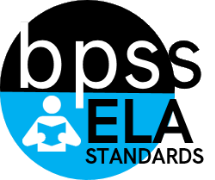
 (F)
(F)
 (C)
(C)
 (R)
(R)
 (Wr)
(Wr)
 (IR)
(IR)





 Strand Cluster
Strand Cluster 